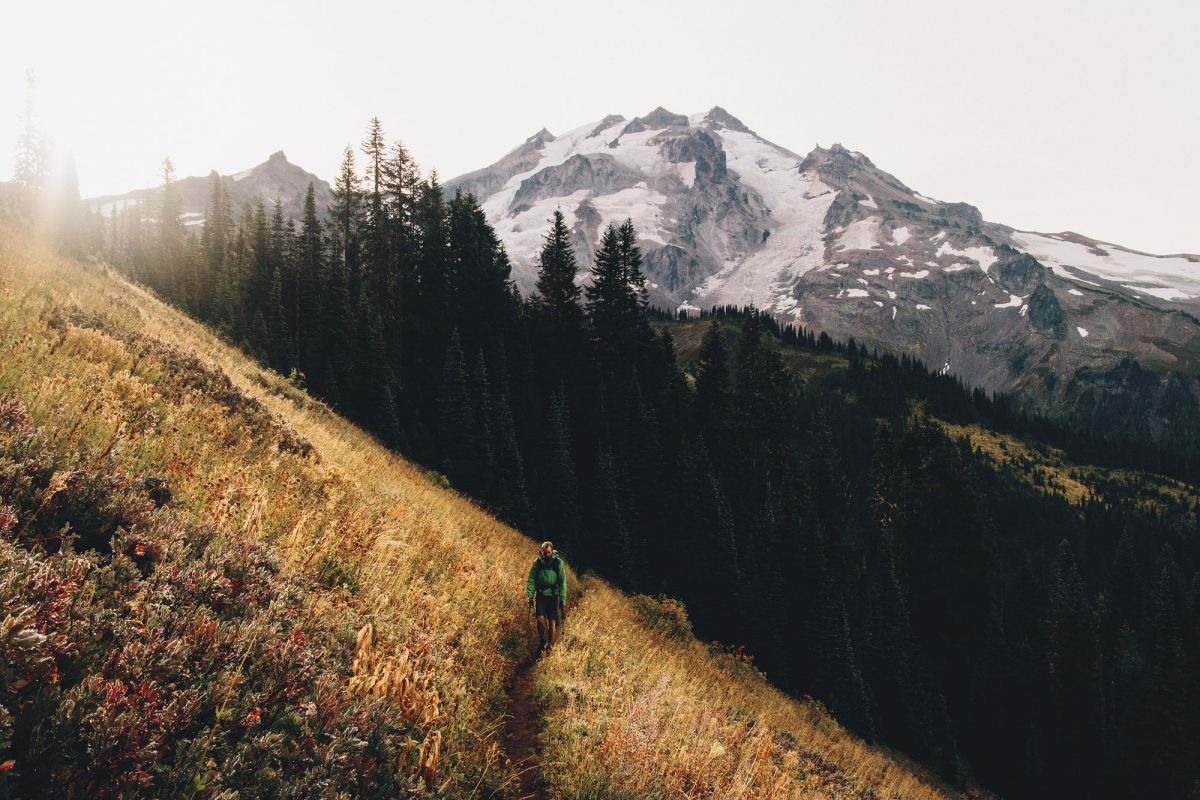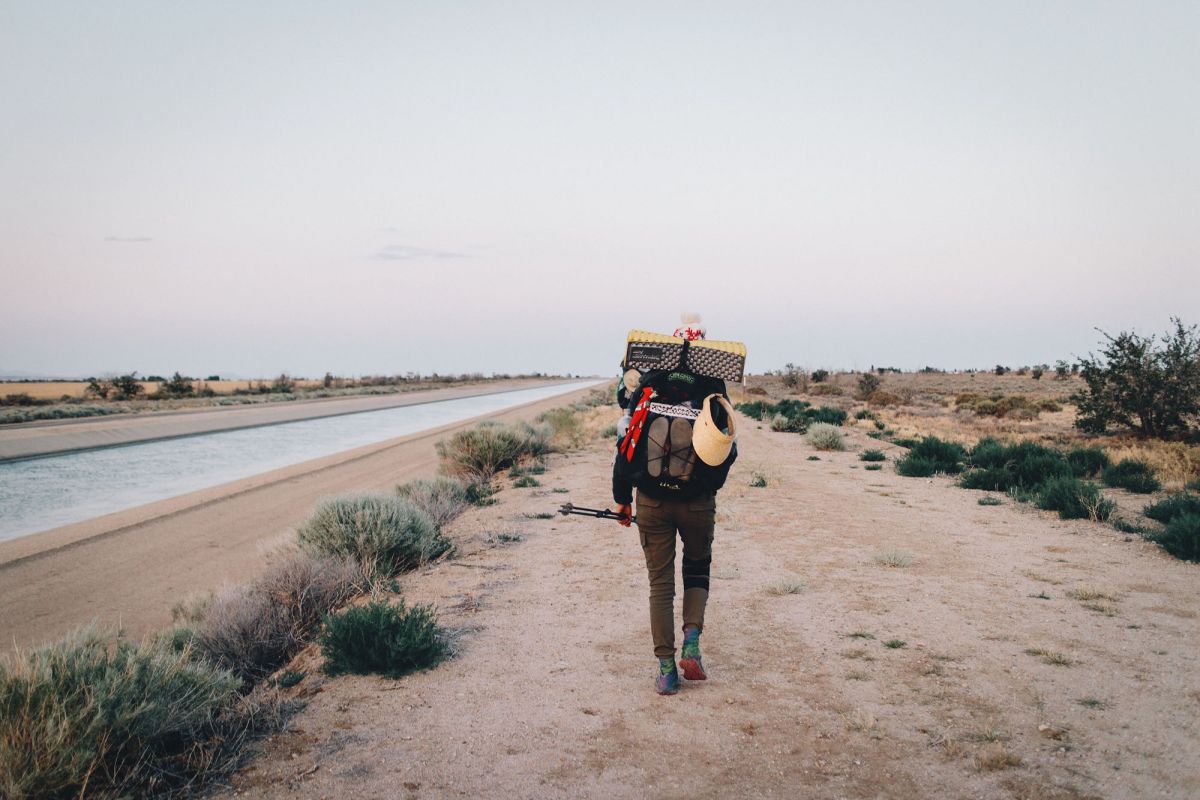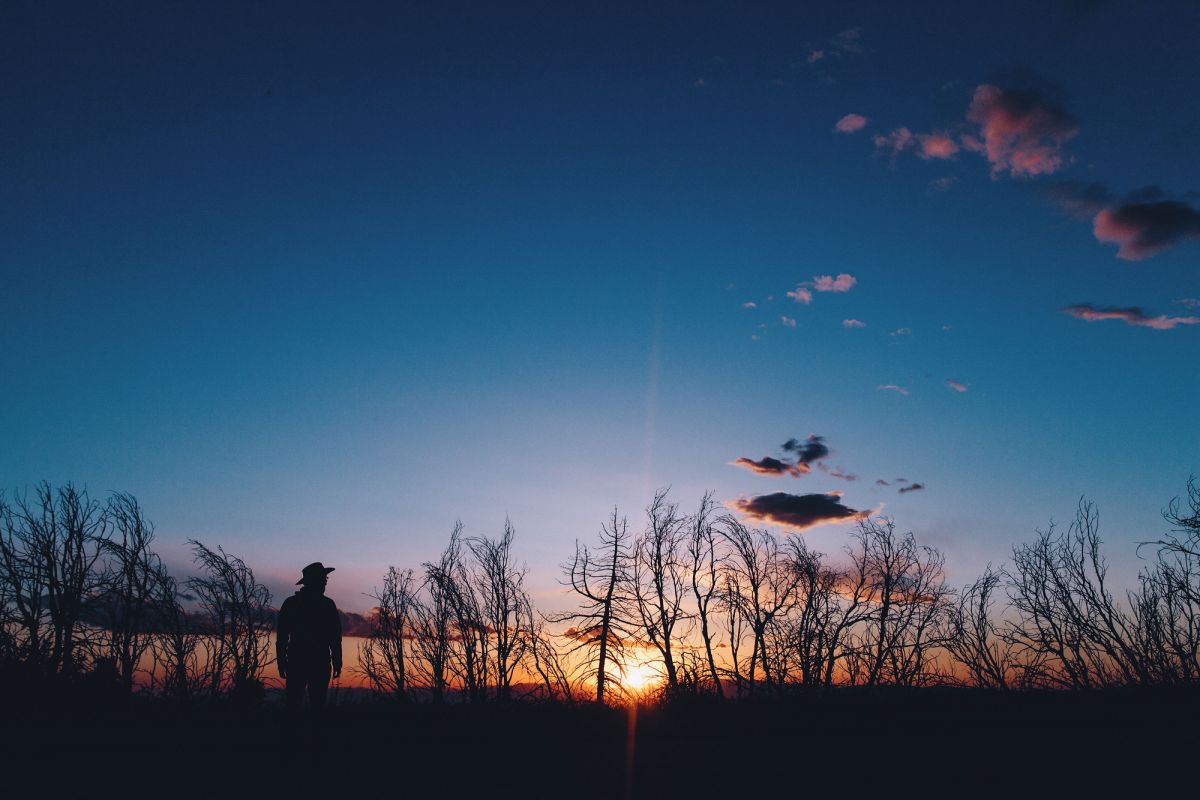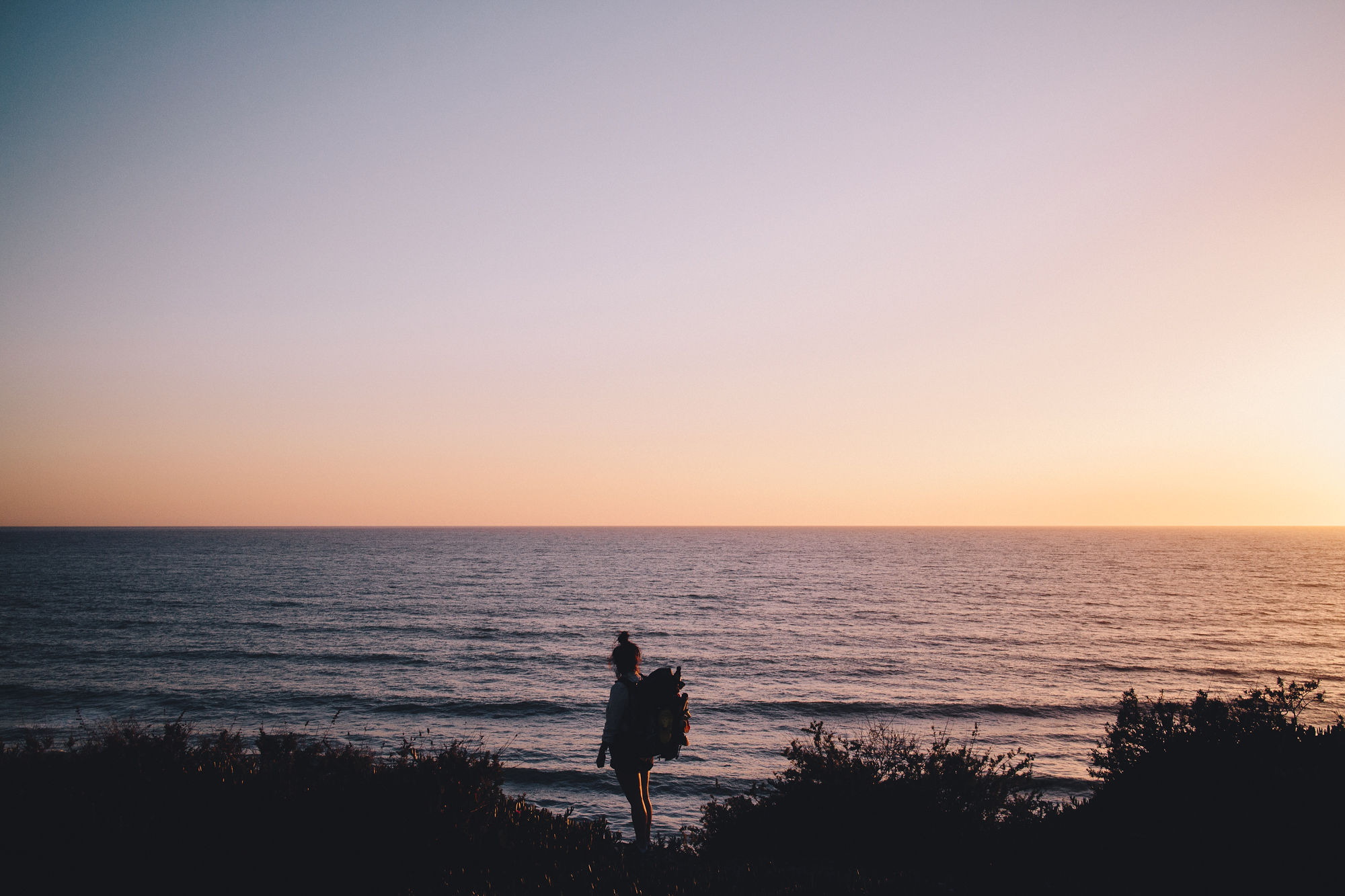Heading into the great outdoors alone can be a worrisome experience. Just imagine, you’re in your tent at night and you hear a twig snap—and no one is there to calm you down. On the other hand, stepping into the wilderness alone lends itself to peaceful contemplation of sunrises and sunsets, undisturbed.
“Solo adventuring is rewarding,” says Michael Ghiglieri, professional guide and author. “There’s nothing wrong with being solo, there’s only something wrong with being solo unprepared.”
If you’re reading this, you might be thinking about heading into the wild all by your lonesome in the future. How do you get started?
Before Heading Out
Start small
You don’t have to thru-hike the Continental Divide Trail on your first try at adventuring alone. “Do shorter mileage and a trail that you’ve done before with people,” says Karen Wang, who solo hiked the Pacific Crest Trail in 2016. “If you’re really, really nervous about it, do something that’s close to home. Camping alone is a good one to practice—go a few hundred feet from your car and see what that’s like.”
Plan ahead
Many accidents, like falls due to ledges snapping off, can be prevented with use of some forethought and planning (don’t walk on ledges). “The word ‘accident’ is tricky,” Ghiglieri says. “Most car accidents don’t happen because the brakes fail, but because the person didn’t apply the brakes. Most of these accidents are completely preventable with prior planning.” He suggests doing your due diligence: What are you likely to encounter during your adventure? What is the terrain like? And, what about the weather?

Do your research on wildlife
Afraid of animals in the backcountry? Wang says you can assuage your fears by learning exactly what to expect. “You can’t control your environment. Educate yourself, prepare yourself and research,” she says. “With animals, do your research. If this is bear country, what am I going to do with my food? If it’s grizzly country, don’t be unwise and try and go out by yourself. Also, a lot of parks have rules about wildlife.”
Check in with the rangers
Robert White, solo hiker and vice president of internal relations for Minority Veterans of America, suggests calling or visiting the ranger station before you head out on trail. Sometimes, you may find out it’s best not to go at all. For example, in December 2016, he was planning a solo hike on the Washington coast. Something told him to check in with the rangers, and his intuition was right—a huge storm was approaching, which would have made the trek dangerous. He decided to stay home.
Provide the right contact information
Lisa Hendy, chief ranger at Big Bend National Park, suggests letting your friends and family members know who to call if you aren’t back by your appointed time. Research the local land manager and figure out what to do if you need help. Is there an email or phone number available? Double-check to make sure it’s the right place to request help. This will greatly decrease the length of time you’re out, should a rescue become necessary.
Leave your plan with someone
It’s imperative that someone knows where you’re going, and how you’re going, Hendy says. “I make sure someone knows where I’m going, these are the colors my backpack and tent are, here’s a picture of the tread on my boots,” she says. She leaves both her Plan A and her Plan B with a trusted friend or family member. “That requires you do some research and extra planning,” she says. “Like, what if it dumps a foot of snow?”

Stick with your plan
Once you make a plan and share it, it’s important to stick to that plan, White says. “Stick to the plan you make when you tell people what you’re doing. When you deviate, people can’t find you. I stop myself from doing that. I don’t want to become that person who’s lost.”
Avoid the 911 mentality
Hendy suggests bringing a satellite device with two-way texting capabilities, so you can be in touch with rescuers, should you need extra support. But know that they don’t always work. “All of these devices count on a good view of the sky,” Hendy says. “They’re not the be-all [and] end-all people make them out to be.” No satellite device can replace experience and planning.
Take a ham radio
Another option, according to White, is to bring a ham radio, also known as an amateur radio. White says he took a class on how to use these small, handheld devices. They’re excellent for emergency situations as they don’t depend on satellites. When you get your basic certification, you’ll get a handle, or name, that gets put in a database, so emergency contact staff can look up your information.
Bring signaling equipment
If you’re stuck somewhere and can’t move, you’ll need to signal rescuers. Hendy suggests bringing “a decent signal mirror that will really do the job. And a whistle. Plus some item of clothing that’s a big obnoxious color.” Another option? “I’ll carry a glow stick,” she says. “They last, like, 12 hours. Don’t pop it until you hear people close by.”
But equipment doesn’t help if you don’t know how to use it. When you’re standing and waving, an item of clothing can be hard for rescuers to spot from the air. Hendy suggests laying down or spreading your brightest clothing on the ground to cover more surface area.

On the Trail
Practice mindfulness
Adventuring alone is a mind game—a primary challenge can be keeping your mind off of worry, fear and discomfort. One way to do that: “Mindfulness,” says Lena Neufeld, a solo section hiker and doctoral student in clinical psychology. “I think that it’s a really excellent practice. It really forces you to be present, in the moment, fully absorbed in what you’re doing.” And adventuring by yourself lends itself to the practice. “When you’re in a group, you’re inherently socializing,” Neufeld says. “When you’re by yourself and you don’t have to attend to anyone else’s social needs, you’re able to go to a much more intense place for yourself. You can go a lot deeper.”
Distract yourself
Of course, being mindful all the time can be exhausting. Another trick to defeat fear and discomfort is distraction. “My biggest challenges come when I get to my campsite too soon, when I have all this extra time on my hands,” White says. “I make sure I have something that fills my extra time up, and then I go exploring.”
Save extra energy
Hiking until you can’t go a step further might be (Type II) fun, but it’s not the safest idea. “There have been instances where I’ve thought about stopping for the day on the Appalachian Trail, but I’d gotten to a shelter and if somebody is there that I’m not comfortable with and I’m alone, I’ll hike on,” says Angie Holbrook, a thru-hiker. “Always leave a little bit of energy left at the end of the day in case something happens. Sometimes you might have to hike farther.”
